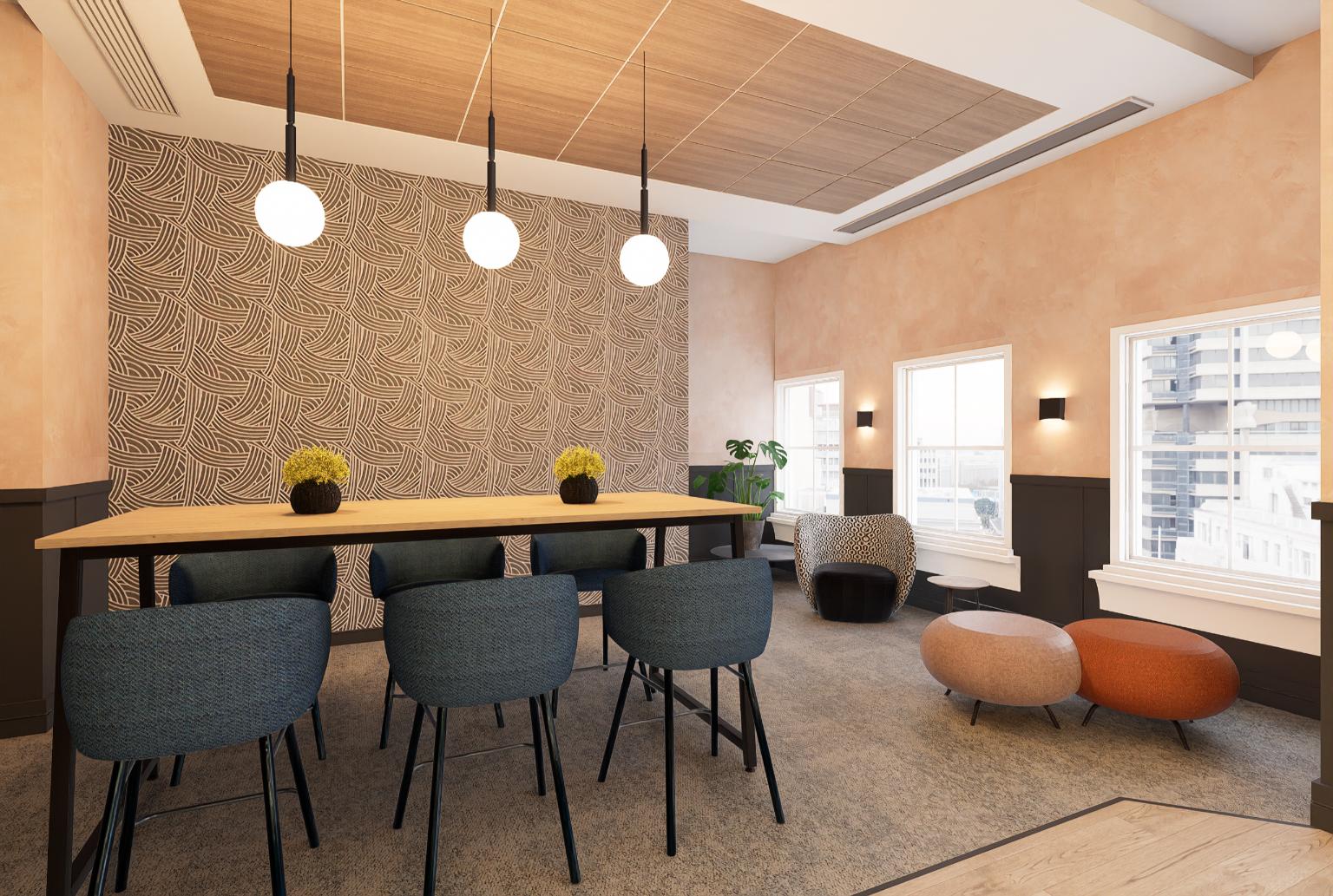The conversation around “getting people back to the office” has, for too long, been framed as a policy problem.
- Mandates
- Days in vs days out
- Attendance targets
But the real driver of office attendance is not policy.
It’s whether the workspace is a place people want to be.
Culture is physical.
It’s shaped by the environment teams spend time in.
If a workplace feels flat, transactional, or fatiguing, whether or not people show up becomes a negotiation.
If it feels energising, calm, social, useful, attendance becomes natural.

The Three-Zone Model for Modern Workplaces
The most successful workplaces today aren’t open-plan, and they’re not cubicle-based.
They balance three core modes of work:
| Zone | Purpose | Why It Matters |
|---|---|---|
| Focus | Quiet, individual deep work | Prevents cognitive fatigue & distraction |
| Collaboration | Shared thinking, problem solving, team rhythm | Builds culture and alignment |
| Social & Reset | Kitchen, lounge, breakout, café-style | Encourages informal connection & belonging |
When these zones are visually and spatially distinct, people instinctively know where to go to do what.
When they’re blurred, everyone defaults to headphones and Slack, even when they’re sitting next to each other.

1) Spaces Need Identity, Not Uniformity
Identical rows of desks say nothing about the culture of the organisation.
Spaces that reflect:
- Brand personality
- How the team works
- Rituals of the day
…are the ones people form attachment to.
It’s the same principle that hospitality uses to keep guests comfortable.
Humans respond to places that feel considered.
2) Collaboration Doesn’t = Meeting Rooms
A boardroom is not collaboration.
A Zoom pod is not collaboration.
Effective collaboration feels:
- Casual
- Flexible
- Writable
- Moveable
- Iterative
Think: Mobile whiteboards, soft seating clusters, adaptable layouts, not “book a room and present at each other.”
3) Social Space Is Not a Perk
It’s the cultural engine.
The best conversations, peer learning, mentoring, and problem-solving happen when people are not at their desks.
A kitchen that invites people to pause isn’t a “nice extra.”
It’s a strategic environment for connection.

The ROI Question
Workplaces aren’t about square footage. They’re about what that square footage enables.
A well-designed workspace increases:
- Retention (people don’t leave places they feel they belong in)
- Performance (cognitive ease = better thinking)
- Culture health (collaboration feels natural, not forced)
And those are the metrics leadership teams actually care about.
Final Thought
If you want people to return to the office, make the office a place that supports:
- how they work,
- how they connect,
- and how they feel.
Design isn’t the “soft side” of workplace strategy. It is workplace strategy.



